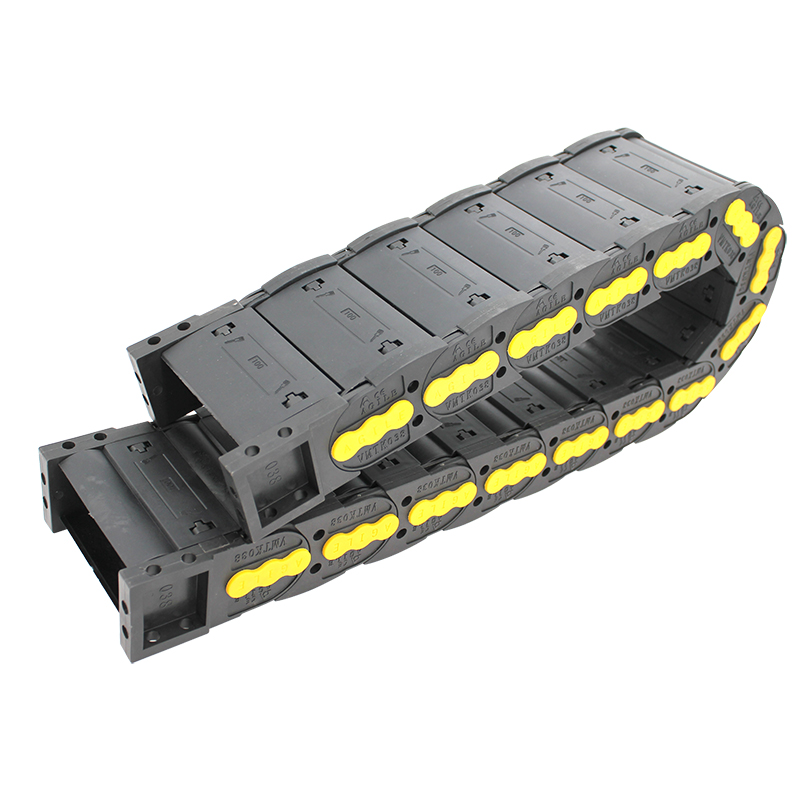heavy duty drag chain
Understanding Heavy Duty Drag Chains Essential Components for Efficient Cable Management
In the world of industrial machinery and automation, the effective management of wires and cables is crucial for ensuring operational efficiency and safety. One of the unsung heroes in this realm is the heavy-duty drag chain, a component specifically designed to protect and guide cables and hoses as they move within various applications. In this article, we will explore the importance, functionalities, and applications of heavy-duty drag chains.
What are Heavy Duty Drag Chains?
Heavy-duty drag chains, also known as energy chains, are flexible, segmented structures that house and protect cables, wires, and hydraulic hoses in dynamic environments. They are typically made from durable materials such as nylon, polypropylene, or steel, which provide both strength and flexibility, making them suitable for demanding applications where movement is a constant factor.
The Importance of Drag Chains in Industry
The principal function of a drag chain is to prevent tangling and wear of cables in machinery that has moving parts. Without drag chains, cables would experience significant friction against surfaces, leading to premature wear, electrical failures, and increased maintenance costs. By organizing and guiding these cables safely, drag chains help in maintaining the integrity of electrical systems and facilitate smoother operations in machinery.
Functionality of Heavy Duty Drag Chains
Heavy-duty drag chains are designed to significantly enhance the durability and lifespan of the cables they manage
. Here’s how they function effectively1. Protection Drag chains provide a protective barrier against mechanical wear, environmental factors, and accidental entanglement. This is especially crucial in high-speed applications where cables are repeatedly subjected to bending and flexing.
2. Guidance As machinery operates, cables can easily become disorganized and tangled. Drag chains guide the movement of cables, preventing them from becoming snagged or caught, which could lead to operational downtime.
heavy duty drag chain

3. Flexibility Most heavy-duty drag chains are designed to remain flexible while also providing a secure environment for cables. This flexibility allows for a wide range of movement and configurations in various machinery.
4. Easy Installation and Maintenance Many drag chains are designed for user-friendliness. They allow for straightforward installation and easy access to cables for maintenance and replacement, which minimizes downtime and enhances productivity.
Applications of Heavy Duty Drag Chains
Heavy-duty drag chains are found in a multitude of applications across various industries. Here are some noteworthy examples
- Manufacturing and Automation In automated manufacturing environments, drag chains are commonly used to guide power and data cables in robotic applications, CNC machines, and conveyor systems.
- Material Handling In cranes and hoisting equipment, drag chains protect cables that manage operation controls, ensuring that equipment functions smoothly without unintentional interruptions.
- Aerospace and Automotive The aerospace and automotive industries employ drag chains in assembly lines and testing machinery to safeguard intricate wiring systems.
- Construction and Mining In robust environments like construction and mining, heavy-duty drag chains are essential in protecting cables in moving equipment that might be exposed to harsh conditions.
Conclusion
Heavy-duty drag chains play a pivotal role in modern industrial applications, serving as reliable conduits for essential cables and hoses. Their ability to protect, guide, and organize these components not only enhances operational efficiency but also reduces maintenance costs and downtime. As industries continue to evolve with automation and advanced machinery, the significance of drag chains will undoubtedly grow, cementing their status as indispensable assets in cable management solutions. Embracing the use of drag chains can lead to more streamlined processes, higher productivity levels, and ultimately, a safer working environment.








